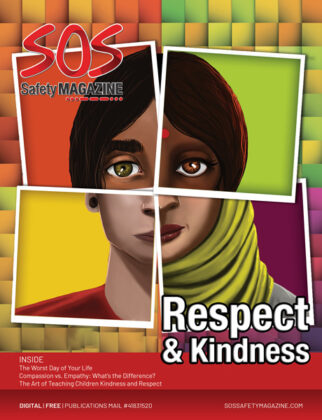DEALING WITH PEER PRESSURE. HOW TO SAY NO?, HEALTHY RELATIONSHIPS ADVICE. BEST DATING TIPS, WHAT IS BULLYING? HOW TO STOP KIDS BULLYING NOW
The Dangers of Snapchat: Protecting Your Children in 2023

Snapchat has emerged as an immensely popular social media platform, captivating a massive user base of teens and young adults worldwide. As of 2023, the platform boasts an impressive 384.30 million daily active users, showcasing a remarkable 2.48% increase from the previous year. Even more remarkably, this exponential growth shows no signs of slowing down. Projections indicate that by 2025, the number of daily active users is expected to surge past 450 million, solidifying Snapchat’s position as one of the leading forces in the social media landscape.
What is Snapchat?
Snapchat is a popular social media app known for its unique feature that enables users to send time-limited photos and videos to each other, ensuring they vanish forever once opened. These instant pictures or videos known as “Snaps” can be enhanced with an array of enjoyable filters that go beyond the capabilities of a standard phone camera. From voice-changing effects to playful filters like dog tongues and ears. With Snapchat, teens and young adults have a way to interact that feels authentic and fun. It’s meant to be low-pressure and low-stakes.
However, it is crucial to acknowledge that this sense of freedom and minimal consequences may sometimes lead individuals to share content that they wouldn’t otherwise. While Snapchat promotes a safe and secure environment, it is essential to recognize that there are methods to capture and retrieve images sent through the platform. It’s essential for users not to develop a false sense of security regarding their shared content.
The Risks of Snapchat
While parents understandably want to grant their children the freedom to connect with friends online, it’s essential to be aware of the very real dangers that come with using Snapchat:
The Myth of Disappearing “Snaps”
As an older adult, it’s evident how these messages, images, and videos can cause significant harm, even if they are only “temporary.” However, young users, who are 13 years old, might not fully grasp this concept. They may assume that their “Snaps” are entirely harmless since they disappear in just a few seconds. The reality, though, is that anyone can save a screenshot of a “Snap” to their phone, and what they do with it afterward is entirely up to them.
A receiver could also take a photo of the screen with another phone or digital camera to evade the notification feature. Then the sender would not know that their supposedly evaporating photo is preserved on someone else’s device. It’s essential for both parents and young users to be aware of this loophole and to exercise caution when sharing anything online.
Snap Map
Snap Map offers users the ability to share their real-time location with anyone on their Snapchat friend list and view the locations of friends who also choose to share. Using it in “ghost mode,” allows you to hide your location while still seeing the location of friends who haven’t hidden theirs.
While this snap map feature enhances social connections, it poses significant safety concerns, especially since not all Snapchat contacts are genuine friends. The risk of sharing one’s precise location with others at any time can be alarming. Moreover, It can also make kids feel bad if they see all of their friends hanging out without them.
Cyberbullying
Almost everyone has experienced bullying in some way or another, but as social media keeps on growing there’s been a substantial increase in online bullying. Unfortunately social media apps like Snapchat make it extremely easy. The feature of sending messages that automatically delete can make individuals feel more empowered behind the keyboard, leading them to say hurtful things they wouldn’t dare to say face to face. Frequently, pictures or videos of someone in compromising situations are used to haze or ridicule them. Although many teens may dismiss this as harmless fun, studies indicate that it takes a severe toll on the mental health of young people.
Sexting
Among teens, Snapchat is commonly used for “sexting,” which involves sending flirtatious or revealing messages to a love interest, girlfriend, or boyfriend. Initially, it began with playful conversations over SMS or other messaging apps, but it has evolved to include sending intimate pictures or videos. The allure of Snapchat lies in the belief that once the picture or video is viewed, it will disappear, making it a popular method of discreet “risky” communication among adults and has greatly increased how easy it is to cheat.
However, there are apps available that can capture and preserve these supposedly disappearing photos or videos. In some cases, this has led to unfortunate instances of private and sensitive content being shared on the internet without consent.
Snapchat itself admits that up to 25% of users may send sensitive content on a regular basis “experimentally.” Although they attempt to absolve themselves of any responsibility by outlining terms of usage when you sign up. They emphasize that users must take complete responsibility for whatever they post. Sadly, most people don’t even read or know that this is in the terms and conditions.
How to keep your kids safe while using snapchat
To keep your child safe on Snapchat, follow these tips: First, set up their account together to ensure they use the correct age, enabling safety settings. Talk to them about managing their wellbeing on social media and set rules for adding friends, encouraging them to inform you about any unknown friend requests. Familiarize yourself with how to report inappropriate content. Educate your child about what is appropriate to share online and what should remain private. Lastly, explore Snapchat’s safety features, such as privacy settings and ‘Snapchat Family Centre,’ to further enhance their safety on the platform.
Snapchats safety features
Snapchat offers several safety features to protect users, especially children. The Family Centre provides an overview of your child’s activity, including friends and recent contacts without revealing message content. It also offers a confidential reporting service to report concerns directly to Snapchat’s Trust and Safety team. Enabling Ghost Mode hides your child’s location from other users. Snapchat restricts contact from adult users to young people aged 17 and below unless they have common friends. Privacy settings allow control over who can contact and view your child’s account. By default, users can only chat with accepted friends. Encourage your child to be cautious about accepting friend requests.
In conclusion, while Snapchat continues to be immensely popular among teens and young adults, it also poses significant risks that parents need to be aware of to protect their children. The myth of disappearing “Snaps” can lead to the unintended sharing of compromising content, as screenshots can be captured without the sender’s knowledge. The Snap Map feature, while enhancing social connections, raises safety concerns due to the potential sharing of precise locations with unknown individuals. Cyberbullying and sexting are rampant on the platform, leading to severe mental health impacts on young users. By staying informed and vigilant, parents can help create a safer online experience for their children on Snapchat.
Written By: Megan Chromik







